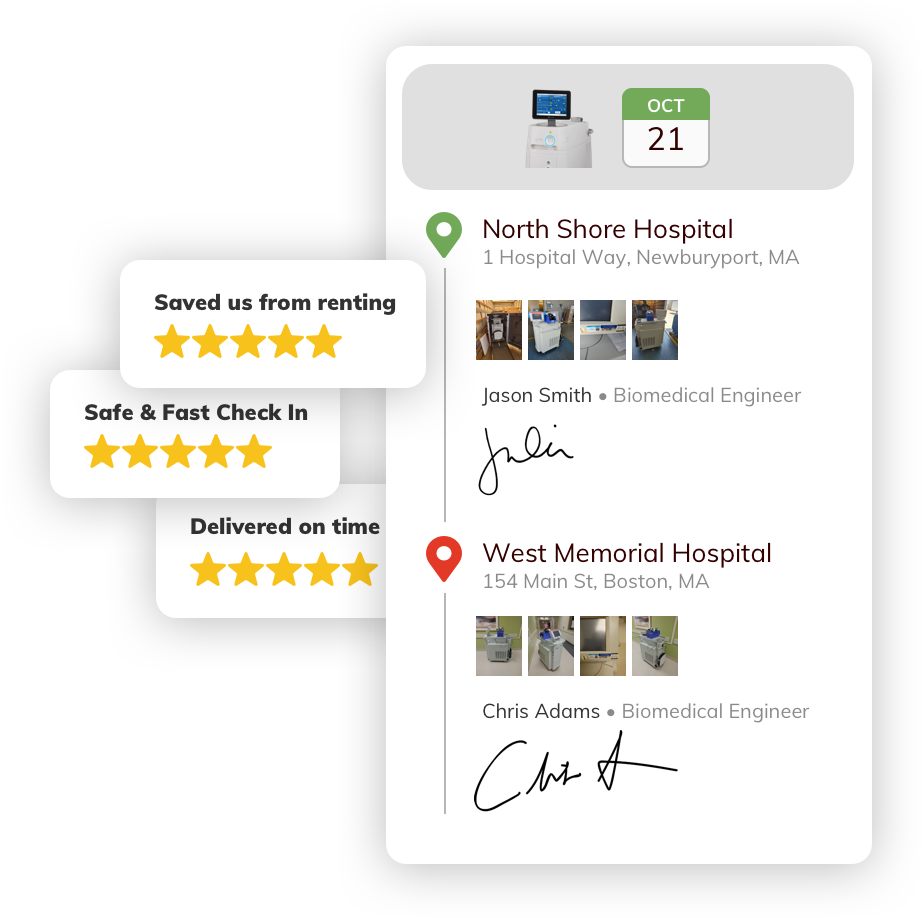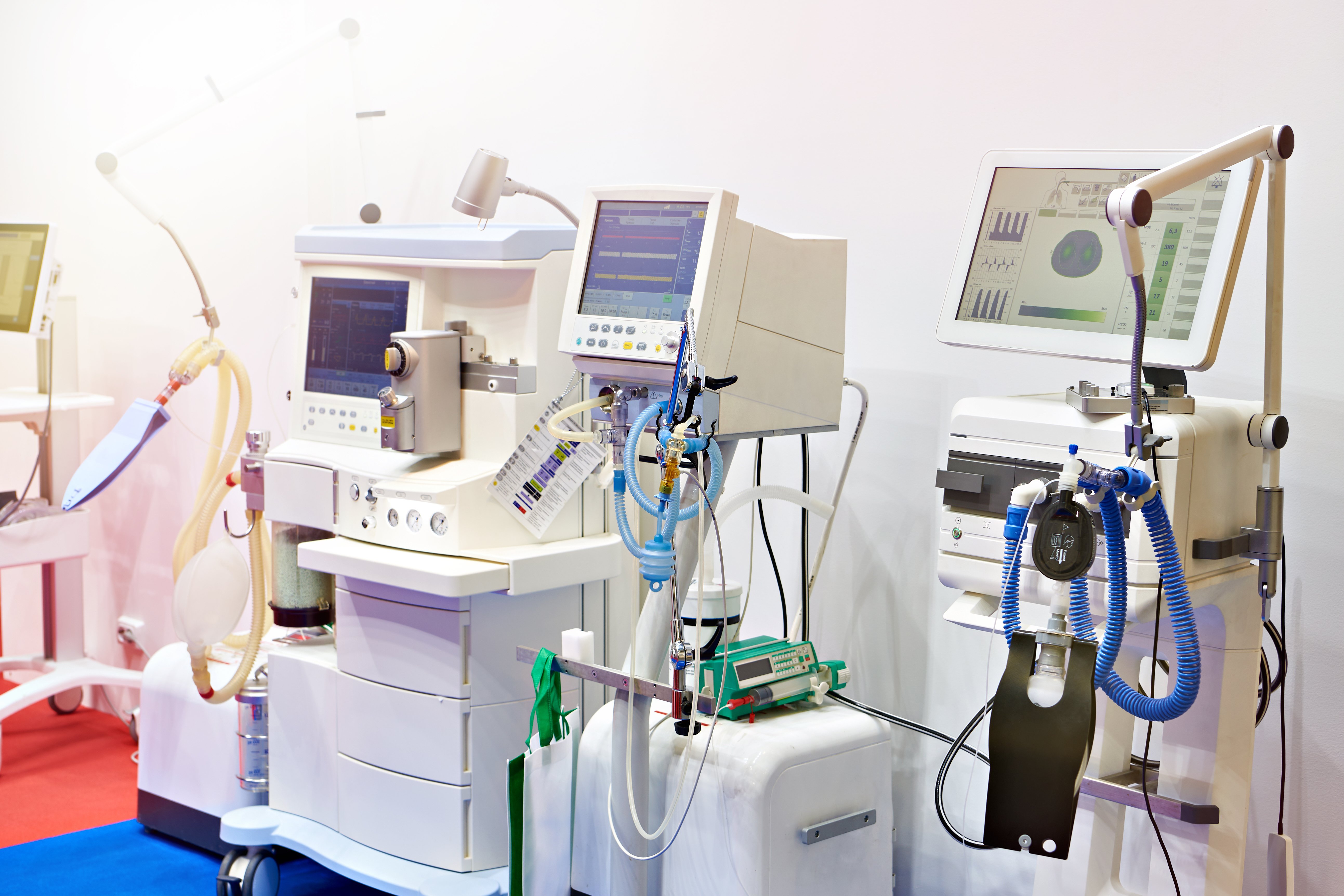Are you a Premier member?

Cohealo's Saving Outcomes
Eliminate Associated Operating Costs
Reduce Rental Expenses
Grow with Cohealo

Make your medical equipment sweat
On average, capital equipment sits idle for more than 90% of it's available life. Cohealo brings collaborative consumption to health care, reducing unnecessary spending on equipment and flexing capacity in times of urgent need.
The Dynamic Ventilator Reserve

Industry recognition
This is a great example of how it actually is possible to find cost reduction opportunities through "systemness." As many experts have observed, mergers and acquisitions (M&A) among providers haven't always generated the economies of scale many had hoped for. As health systems grow, they tend to end up with the same cost structures replicated in multiple locations.
It’s been said we live in a sharing economy: We share our homes through companies like Airbnb, and we share our cars through companies like Uber and Lyft. So it’s not surprising that organizations are now sharing equipment, including OR equipment, with positive results. For example, Kaiser Permanente Southern California (KP-SC) saved the purchase price of a lithotripsy machine in one year by sharing it with other facilities, says Ronald Loo, MD, physician co-lead for the health innovation team at KP-SC.

As the coronavirus pandemic stretches on, online platforms have popped up to match hospitals that need masks, gowns, ventilators and even doctors with those that have extras. And other projects have been started to link hospitals with nontraditional sources of equipment. “There’s a lot of enthusiasm for this,” said Michelle Hood, chief operating officer of the American Hospital Association.

Keep in touch
Frequently asked questions
Based in Boston, Cohealo finds savings for health systems by maximizing the utilization of their medical equipment through proactive data analytics and equipment sharing, substantially reducing capital expenses, associated operating costs, and equipment rentals. As the program scales within a health system, the network effect drives increasing levels of savings and improves providers’ access to expensive medical technology.
Cohealo is the technology platform for the groundbreaking Dynamic Ventilator Reserve (DVR), a partnership between the White House, American Hospital Association, and leading group purchasing organizations to ease COVID19-related shortages by sharing critical care equipment between participating health systems. The DVR is comprised of six of the ten largest health systems in the country, and more than two dozen leading healthcare networks.
Cohealo has been named to Fast Company’s Most Innovative Companies List and CNBC’s Disruptor 50 and is recognized as the first solution of its type to bring the sharing economy to healthcare.
Cohealo’s platform is comprised of an equipment marketplace, reservation engine, supporting logistics, and analytics. A dedicated customer success team supports operating room staff with equipment needs, from request to fulfillment, and works with our clients to identify new opportunities for expense reductions.
Marketplace:
Cohealo’s equipment marketplace provides a browsable catalog of a health system’s inventory. Staff can reserve equipment through phone, text, email, or in the platform. Clinical staff can learn more about the equipment by viewing dedicated equipment profile pages with information on accessories, consumables, facility ownership, site contacts, and credentialing.
Reservation engine:
Cohealo ingests 17 data points from our customer's EMR case schedule, enabling real-time insight into bookings. When equipment is needed, the platform reserves the best candidate for sharing, continuously optimizing the unit selected up until the day before a case, accounting for proximity, physician preference, make/model substitutions and more. The platform can detect when home-site equipment is unavailable for a case, alerting clinical staff and auto-reserving shared resources, preventing rentals or case delays.
Supporting logistics:
The Cohealo platform orchestrates all logistics required for equipment sharing and is vendor agnostic. Customers can leverage Cohealo’s owns trucks, work with one of our pre-vetted third-party logistics vendors or use their own in-house logistics. Cohealo has more than $2M of insurance on each move, with specialty mobilization procedures and crating for each equipment type. Our chain-of-custody mobile app collects signatures, condition photos, and driver details from lending and borrowing sites.
Analytics:
In the background, Cohealo's system tracks metrics such as equipment utilization, case duration, equipment downtime, rental needs, etc. This data is used to surface additional savings opportunities.
Cohealo’s ideal customer is a health system with two or more facilities, inclusive of hospitals, ambulatory surgery centers, and medical office buildings. Regional sharing networks are typically most effective within a 200-mile radius, though opportunities exist for managing equipment at broader geographical scale if assets can be loaned for a longer period of time.
The below list, while not exhaustive, is meant to provide an overview of items that Cohealo has consistently found to have excess capacity and present ample opportunity for sharing. Given the
variability of equipment brands, most of the below list represents equipment categories, rather than individual items.
• Automatic Grafting Systems
• C-Arms; Mini C-Arms
• Cautery Devices (e.g. Aquamantys, Force 2)
• Coblators
• Debriding Devices
• Drills
• Endoscopic Ultrasounds
• GAMMA Probes
• Harmonic Scalpels
• Imaging Tables
• Insufflators
• Laryngoscopes
• Lithotripsy Machines
• Navigation Systems
• Nerve Stimulator Machines
• Phacoemulsification Systems
• Surgical Cameras
• Surgical Drills (e.g. Stryker, Midas)
• Lasers (e.g. Greenlight, Holmium, KTP)
• Microscopes
• Nerve Monitoring Systems (e.g. NIMS Monitor)
• Surgical Positioners (e.g. Schlein Shoulder)
• Surgical Ablation Systems
• Surgical Tables (e.g. Hana Table, Jackson Table)
• Surgical Ultrasound Machines (e.g. SONOSITE, BK)
• Tissue Perfusion Devices (e.g. Spy-PHI)
• Towers & Scopes (e.g. EUS, EBUS)
• Ultrasonic Tissue Ablation
• Waste Management Systems
Many health systems will independently share a few pieces of equipment in emergencies or occasionally move a single unit between facilities. The most common method of tracking this activity is through spreadsheets and phone calls. However, as the program grows, issues of equipment conflicts, unnecessary moves, substandard documentation, and insurance coverage emerge as challenges. Demand for limited units of new technology make the need for dynamic, accurate scheduling even more essential.
Cohealo's technology enables dynamic sharing of any unit of medical equipment with no additional coordination required from staff. We take on all the work of sharing, ensuring the physician's preferred unit of equipment is delivered to the right place, at the right time, fully documented, with staff continually updated about move status. Our scheduling engine pulls the best unit of equipment to be shared, maximizing fleet utilization while optimizing for the lowest cost of logistics.
Cohealo works with the health system to determine the best vendor for logistics. Cohealo owns trucks, but also works with specialized third-party transport companies to move equipment. These partners are experienced in moving sensitive medical equipment and are trained on Cohealo’s specific handling and exchange processes. Additionally, if a health system has their own logistics provider, we can work directly with that vendor.
Cohealo has a tightly controlled chain of custody. Across more than 5,000 moves, we have a 99.98% damage free and on-time rate. Cohealo documents that equipment is safely picked up and dropped off and keeps detailed records of all mobilizations. The entire chain of custody process is managed within the Cohealo platform with drop-off and pickup photos and staff signatures recorded in a digital waybill. Cohealo maintains insurance of more than $2 million dollars for each move.
Cohealo’s goal is to have requests for equipment on the schedule at least 24 hours in advance, with delivery of the equipment 8-12 hours prior to the case. If a piece of equipment is requested late in the cycle (less than 24 hours notice), Cohealo will make a best effort to service that request. Equipment can usually be located from sharing facilities and quickly redeployed.
Connect with Cohealo
Interested in learning more? Enter the form to start the conversation with our team.

